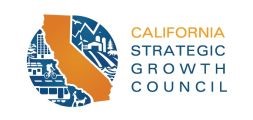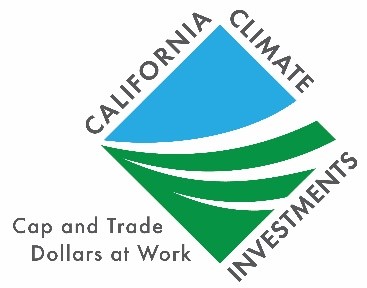Cap-and-Trade Funded SALC Program Commits Nearly $48 Million to Conserve Agricultural Land, Minimize Greenhouse Gas Emissions
NR#2018-11
November 28, 2018
SACRAMENTO -- The
Strategic Growth Council approved nearly $48 million in grants to support agricultural conservation projects that will protect and preserve agricultural land from development and reduce harmful greenhouse gas emissions.
See the full list of grant recipients here.
The Strategic Growth Council voted to award $47,996,195 to fund 17 agricultural conservation easements in 13 counties. The Council began the Sustainable Agricultural Lands Conservation (SALC) Program in 2014 as part of a larger effort to promote more compact development across the state. In its first three years, the SALC Program distributed $75.9 million to land trusts and local governments.
"The projects funded by the SALC Program help California protect agricultural land while reducing our carbon footprint. They also advance the goal of preserving vibrant communities and enhancing the quality of life for Californians,” California Natural Resources Secretary John Laird said.
The SALC Program is one of the
California Climate Investments programs that invest cap-and-trade auction proceeds in projects that reduce greenhouse gas emissions while providing a variety of additional benefits to California communities.
This year’s awards will conserve approximately 10,721 acres of high-value and productive agricultural land and eliminate more than 18 billion potential vehicle miles travelled that would result from development of these lands over a 30-year period. That equates to nearly 7.5 million metric tons of carbon dioxide equivalent over the 30-year period.
“The Strategic Growth Council is thrilled to support these 17 agricultural conservation easements,” SGC Executive Director Louise Bedsworth said. “These investments will preserve prime farmland and compliment more compact, climate-smart development patterns in the surrounding area. The SALC program reduces greenhouse gas emissions associated with carbon-intensive development patterns and also protects the farming economy and the agricultural heritage of our state.”
The Department of Conservation’s Division of Land Resource Protection led the review of 26 funding proposals before recommendations were made to the Strategic Growth Council to fund 17.
The SALC Program awarded its largest grant to date — $8.9 million — to the Sutter Buttes Regional Land Trust to conserve more than 1,300 acres of prime farmland in Yuba County. It also funded three projects in Santa Clara County, realizing the implementation of recent agricultural conservation planning efforts in the area. Two projects each were funded in Monterey and Shasta counties. Projects in Marin, Sonoma, Fresno, San Joaquin, San Luis Obispo, Placer, Madera, Sacramento, and Sierra counties also received grants.
“We congratulate all of the organizations that made successful project proposals and thank the landowners for their commitment to conserve valuable agricultural land and help California reduce greenhouse gases,” Department of Conservation Director David Bunn said. “We’re proud to be a partner in this effort.”
The SALC Program funding is part of a much larger effort by the state to reduce greenhouse gas emissions. To date the Strategic Growth Council has awarded over $1 billion through its competitive grant program to facilitate that goal. The funds were awarded to projects to reduce emissions by supporting more compact infill development patterns as well as encouraging active transportation and transit usage. More $550 million of that funding was aimed at benefiting disadvantaged communities.
About California Climate Investments:
The Sustainable Agricultural Lands Conservation Program is part of California Climate Investments, a statewide program that puts billions of cap-and-trade dollars to work reducing greenhouse gas emissions, strengthening the economy, and improving public health and the environment—particularly in disadvantaged communities. The cap-and-trade program also creates a financial incentive for industries to invest in clean technologies and develop innovative ways to reduce pollution. California Climate Investment projects include affordable housing, renewable energy, public transportation, zero-emission vehicles, environmental restoration, more sustainable agriculture, recycling, and much more. At least 35 percent of these investments are located within disadvantaged, low-income communities, and low-income households across California.
For more information, visit the California Climate Investments website at
caclimateinvestments.ca.gov


Contact:
Don Drysdale
(916) 323-1886
pao@conservation.ca.gov
